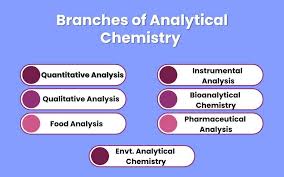Pharmaceutical Analysis I: Basics of Analytical Techniques and Instruments
Pharmaceutical analysis plays a crucial role in ensuring the quality, safety, and efficacy of drugs. In Pharmaceutical Analysis I, students are introduced to the fundamental analytical techniques and instruments used in the identification, quantification, and purity assessment of pharmaceutical substances. These techniques form the backbone of quality control and assurance in the pharmaceutical industry. In this blog, we will explore the basics of some key analytical techniques and instruments that are taught in this course.
1. Importance of Pharmaceutical Analysis
Pharmaceutical analysis ensures that medications are safe, effective, and meet regulatory standards. It covers the analysis of raw materials, intermediates, and finished products. The objectives are:
- To ensure the correct drug identity.
- To measure the concentration of the drug in formulations.
- To assess the purity of active ingredients.
Proper analysis helps in detecting impurities, controlling the dosage, and maintaining the overall quality of pharmaceutical products.
2. Common Analytical Techniques
The first course in pharmaceutical analysis typically introduces the following key techniques:
a) Titrimetric Analysis
Titration is one of the oldest and simplest methods of analysis. It involves the gradual addition of a reagent to a sample until a reaction reaches completion, indicated by a color change (end-point). Common types of titrations include:
.Acid-Base Titration : Used to determine the concentration of an acidic or basic substance.
.Redox Titration : Involves a reduction-oxidation reaction, commonly used to analyze substances like ascorbic acid.
.Complexometric Titration : Involves forming a complex, usually for determining metal ions (e.g., calcium and magnesium).
b) Gravimetric Analysis
Gravimetric analysis involves measuring the mass of a substance to determine its concentration. A common example is the precipitation method, where the analyte is converted into an insoluble form, filtered, dried, and weighed. It is highly accurate but time-consuming.
c) Spectroscopic Techniques
Spectroscopy refers to the interaction of light with matter, and several methods are widely used in pharmaceutical analysis:
.UV-Visible Spectroscopy : Measures the absorbance of UV or visible light by a substance to determine its concentration.
.Infrared (IR) Spectroscopy : Identifies functional groups and molecular structure by measuring the absorption of infrared light.
.Fluorescence Spectroscopy : A highly sensitive technique that detects fluorescent light emitted by a sample when excited by light.
d) Chromatographic Techniques
Chromatography is a separation technique that separates components in a mixture, and it is extensively used for drug testing and purity analysis:
. Thin Layer Chromatography (TLC) : A simple and quick method to separate non-volatile mixtures using a stationary phase (e.g., silica) and a mobile phase (solvent).
.High-Performance Liquid Chromatography (HPLC) : A highly efficient technique for separating, identifying, and quantifying components in a mixture, widely used in both research and industry.
.Gas Chromatography (GC) : Used for analyzing volatile substances, GC separates components based on their volatility and interaction with a stationary phase.
e) Electrochemical Methods
These methods involve measuring the electrical properties (voltage, current, charge) of a chemical system:
.Potentiometry : Measures the potential difference between two electrodes to determine the concentration of ions in solution (e.g., pH measurement).
.Conductometry.: Measures the electrical conductivity of a solution, often used for water purity analysis.
3. Key Instruments in Pharmaceutical Analysis
Analytical techniques are performed using advanced instruments, many of which are introduced in Pharmaceutical Analysis I:
a) pH Meter
A pH meter measures the acidity or alkalinity of a solution. In pharmaceutical analysis, pH control is crucial for the stability and efficacy of many drugs.
b) UV-Visible Spectrophotometer
This instrument measures the absorbance or transmittance of light in the UV-visible range, used to quantify substances based on the Beer-Lambert law.
c) High-Performance Liquid Chromatography (HPLC) System
An HPLC system consists of a solvent delivery system (pump), an injector, a chromatographic column, a detector, and a recorder. It separates the components of a mixture and identifies them based on their retention time.
d) Infrared Spectrophotometer
This instrument is used to obtain the IR spectrum of a sample, allowing for the identification of functional groups and study of molecular structures.
e) Analytical Balance
Used for precise measurement of small quantities of a substance, an analytical balance is critical for gravimetric analysis and sample preparation.
4. Applications in Pharmaceutical Industry
Pharmaceutical analysis techniques are applied in:
.Quality Control : Ensuring that drugs are free from harmful impurities and contain the correct amount of active ingredients.
.Regulatory Compliance : Meeting the stringent standards set by authorities like the FDA (U.S.) or EMA (Europe).
.Research and Development : Identifying and quantifying new drug substances during the development of new formulations.
5. Conclusion
Pharmaceutical Analysis I provides the foundation for understanding the critical role of analytical techniques and instruments in ensuring drug safety and efficacy. These techniques not only help in the routine quality control of pharmaceutical products but also play a vital role in research and development. Mastering these techniques is essential for any aspiring pharmacist or pharmaceutical scientist as it opens the door to various opportunities in both industry and academia.
As technology advances, new instruments and methods continue to evolve, making pharmaceutical analysis a dynamic and ever-evolving field.














